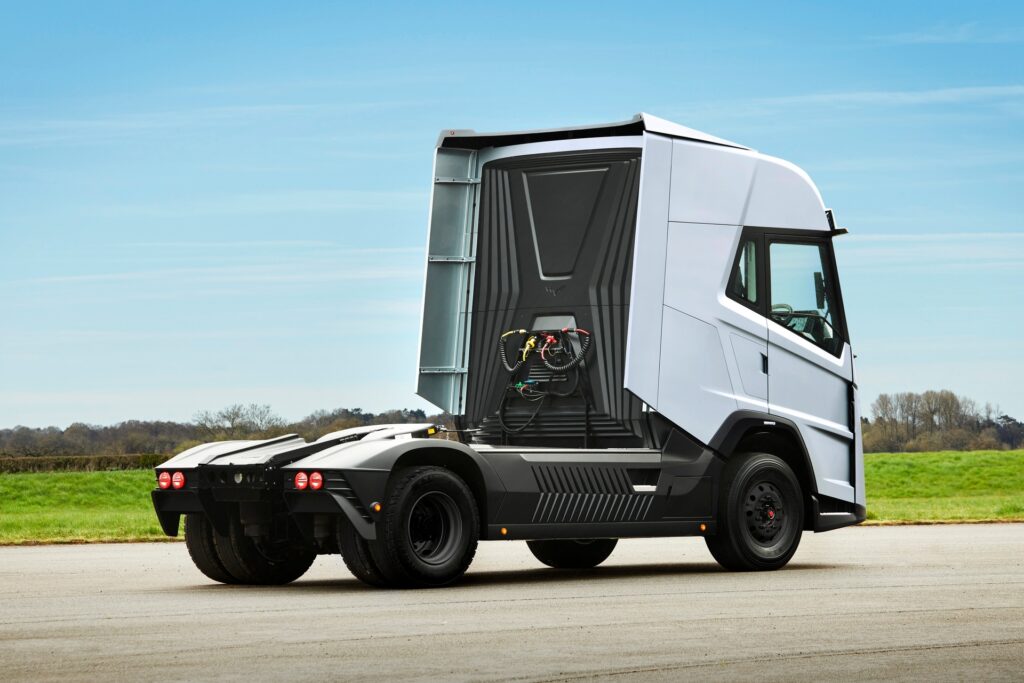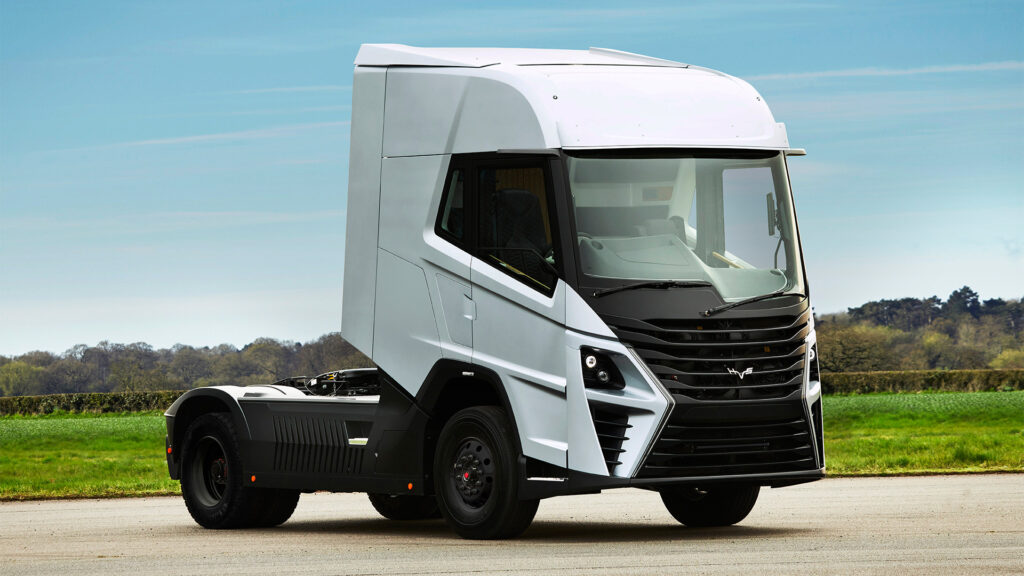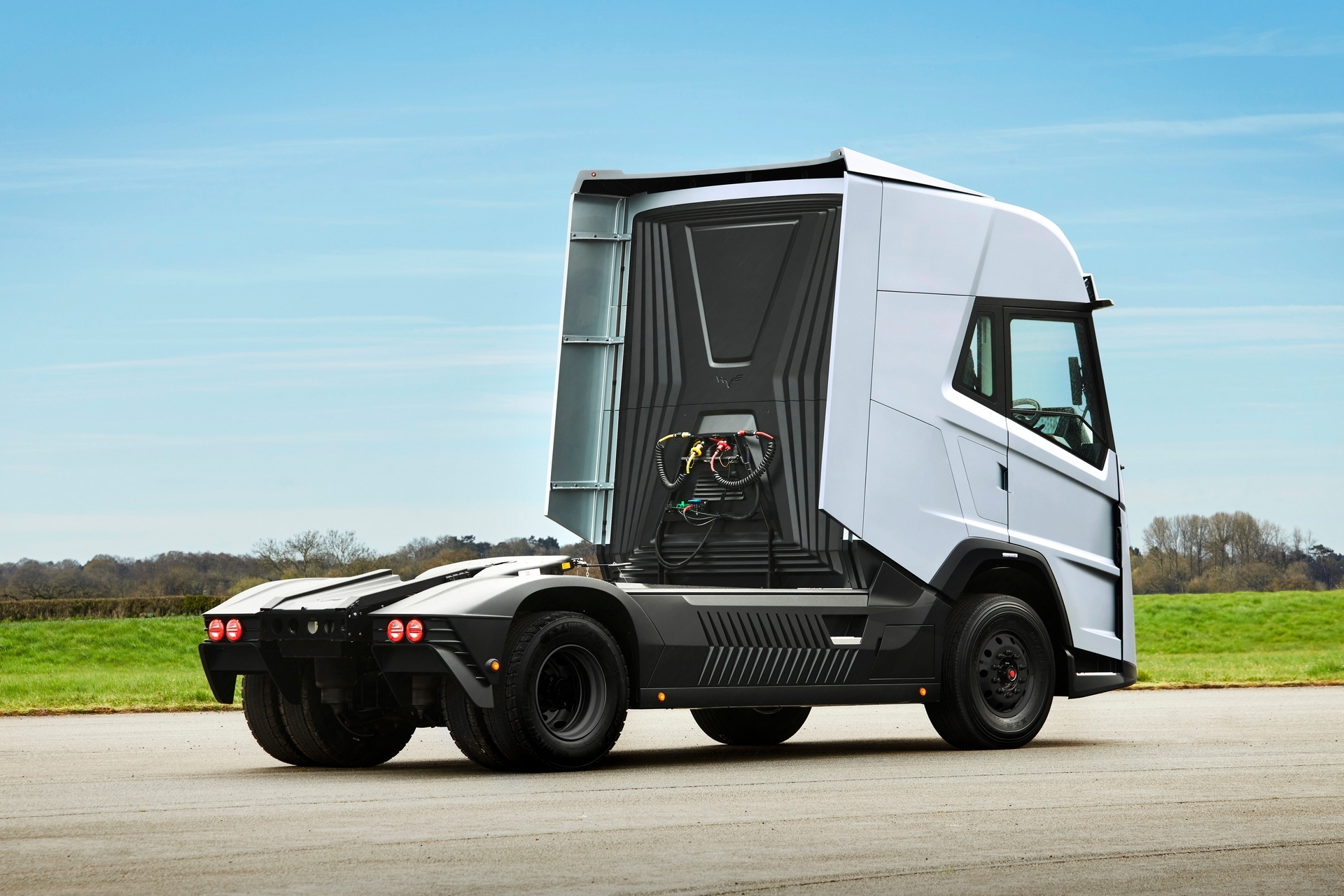After a lot of development work and teasing, the UK’s Hydrogen Vehicle Systems (HVS) has unveiled a functional demonstrator of its long-promised 40-tonne Heavy Goods Vehicle (HGV) driven by a hydrogen-electric powertrain.
The innovative vehicle is underpinned by a bespoke chassis developed in-house and receives its power from a hydrogen set-up that includes fuel cells, an electrified rear axle, pressurized hydrogen cylinders, and an energy storage system. HVS has also equipped the HGV with a kinetic energy recovery system (KERS) to recapture energy typically lost under braking and during deceleration.
HVS notes that the truck can travel up to 370 miles (600 km) on a single tank and that it takes just 20 minutes to fill up the hydrogen tanks. This is roughly the same amount of time that it takes to fill up a diesel-powered truck similar in size. It is also much quicker than it would be to charge up the battery of an equivalent battery-electric truck.
Read: HVS Gets UK Government Funding For Hydrogen Truck With Autonomous Tech

From a visual perspective, the HGV is definitely something to behold. The front fascia primarily consists of grilles finished in black and complete with slats that run horizontally across the bodywork. It then sports a pair of compact headlights.
Given that it is powered by hydrogen and aerodynamic efficiency was a key goal in its design, the HGV also has cameras as opposed to traditional wing mirrors. The interior is also quite unique from most other trucks of this size, sporting multiple large screens, pieces of wooden trim, and a two-tone design dominated by black and white pieces of leather.
“This technology demonstrator showcases our ground-breaking hydrogen-electric commercial vehicle design and advanced powertrain technology,” HVS chief executive Jawad Khursheed said. “Our zero-emission trucks are a key part of decarbonizing the logistics sector. Hydrogen is the perfect fuel for the haulage industry, offering long ranges and quick refueling thanks to stations being easily integrated into existing key transport networks.”






